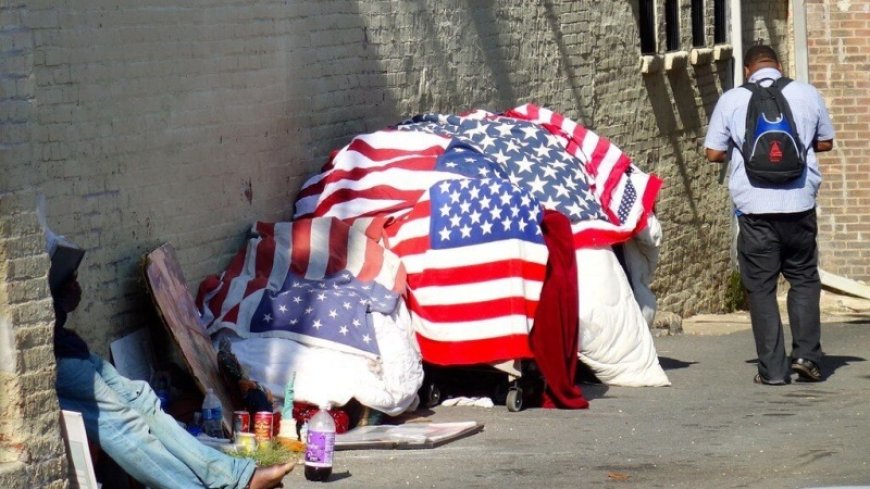A 10% increase in U.S. homelessness points to an expanding crisis.

With fresh numbers showing a 10% surge from the year before, homelessness in the United States keeps rising at a startling pace. Reports from more than 250 homeless relief organizations indicate that as of early 2024, there are 550,000 unhoused people nationwide—a notable increase in a crisis that has been progressively worsening.
Published by The Wall Street Journal, the figures show that a variety of more general economic factors—cuts to financial aid programs, increasing housing prices, and severe rent increases—are driving this developing issue, not only of particular groups like immigrants. For many Americans without consistent shelter, this alarming trend is aggravating already terrible circumstances.
Examining closer: Why is homelessness rising?
Although the 10% increase initially seems like a startling number, the underlying factors show a more complicated picture of the social and financial stresses many Americans experience. Affordability of housing has grown to be a critical problem in big cities all throughout the nation. Double-digit rent increases over the past year in places including New York, Los Angeles, and San Francisco—where housing markets are particularly erratic—have sent more people onto the streets.
Particularly at the federal and state levels, cuts in government aid programs have aggravated the situation. Rent subsidies, low-income family assistance, and affordable housing projects have suffered declines, therefore depriving vulnerable groups of resources to keep housed. Furthermore, inflation keeps outpacing pay increase, which makes it more difficult for Americans from lower incomes to pay even the most basic living needs.
The U.S. Department of Housing and Urban Development (HUD) also reports that the number of persons suffering chronic homelessness—that is, individuals who have been unhoused for a protracted period and usually battle with impairments or mental health issues—has sharply increased. Now representing a record high, this group strains community resources, healthcare providers, and shelters even more.
The Changing Character of homelessness
The present surge of homelessness affects not only conventional groups like low-income households and the unemployed. People with employment, middle-class earnings, even recent college grads are finding themselves unable to cover the growing housing expenses. Although it is no longer the main cause of economic uncertainty, the epidemic has caused long-lasting damage on the employment market and many people still find it difficult to get their financial footing.
One of the more worrying features of this developing catastrophe is that it is affecting rural as well as metropolitan communities. Although big cities like New York, Los Angeles, and Chicago have always carried the most burden of homelessness, smaller towns and communities are also seeing increasing counts. Affordable accommodation is becoming more and more rare everywhere; in smaller towns, shelters and relief organizations may lack the means to manage such unexpected influx.
Furthermore intimately entwined with homelessness are issues of mental health and addiction. Many homeless people battle untreated mental health problems or drug abuse, which makes returning into permanent housing challenging. Although several programs seek to offer therapy and support, the resources are sometimes limited, thereby leaving many without the assistance required.
Policy Failures: The Path Ahead
The increase in homelessness has spurred intense discussion among advocacy groups and legislators on the appropriate course of action. Although feeding programs and temporary shelters are vital for immediate relief, professionals concur that additional long-term solutions are absolutely needed. Commonly suggested long-term measures are affordable housing projects, increased access to healthcare, and improved mental health and addiction treatment support.
Housing activists at the federal level are advocating more money to support initiatives like HUD's Housing Choice Voucher Program, which gives low-income families, veterans, and persons with disabilities subsidies. Still, political deadlock and budget limitations make it challenging to carry out significant changes.
Apart from national campaigns, local and state governments are investigating creative ideas to address homelessness. For instance, California recently set aside billions of dollars to address its housing crisis, emphasizing the construction of reasonably priced homes and homeless person support facilities. In keeping with this, New York has started pilot projects offering subsidized homes together with wraparound services including mental health care and job training.
Still, these initiatives are sometimes greeted with opposition, especially from groups against the building of reasonably priced homes in their local areas. In many places, the "Not In My Backyard" (NIMBY) movement has been a major challenge as citizens oppose new housing developments they worry would drop property values or cause an inflow of homeless people into their neighborhood.













































